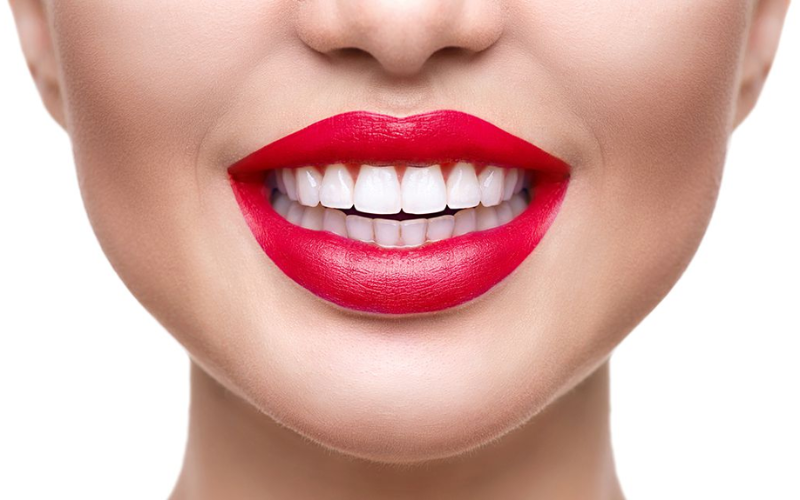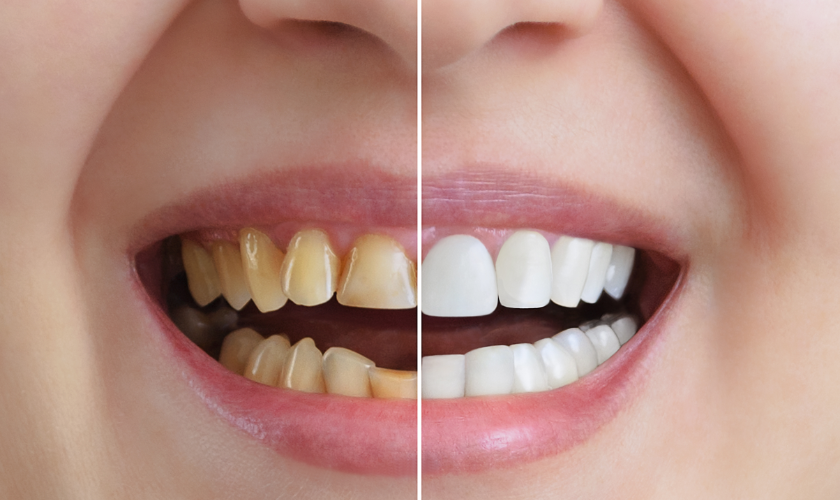
That stabbing pain after a bleaching session can shake anyone. You’re not the only one, and you don’t have to tough it out. Tooth sensitivity is normal, and tooth whitening increases it temporarily. The American Dental Association adds that temporary tooth sensitivity and gum irritation are the most common side effects of whitening.
About 1 in 8 adults have dentin hypersensitivity even prior to whitening, so flare-ups are not uncommon.
Why whitening makes teeth feel zingy
Peroxide gels penetrate enamel and travel into the dentin layer, temporarily opening fluid-filled dentinal tubules that connect with the tooth nerve. That’s the “zing.” A few studies even say that approximately half of users of at-home whitening trays experience mild sensitivity, with a small group reporting more serious symptoms for a week or two.
Good news: most people find that the effect is short-lived and reacts well to simple measures.
Relief that really works (and lasts)
Before you whiten
Prime with a desensitizing toothpaste. Stannous fluoride offers strong support for sensitivity relief. Potassium nitrate has mixed evidence, but most patients enjoy benefits; some dentists still prefer to combine it with fluoride. Use daily for 2–4 weeks before treatment.
Fix the triggers first. Exposed roots, cracked enamel, or cavities will accentuate whitening sensitivity. A quick dental exam prevents surprises.
During treatment
Lower peroxide concentrations and shorter wear periods reduce symptoms without derailing results—especially helpful if you’re planning teeth whitening in Circleville with custom guidance from Dr. Chaney.
Use well-fitting trays. Poorly fitting or long-term wear trays raise the risk of gum irritation and early sensitivity spikes.
Numerous in-office and at-home products contain potassium nitrate and fluoride to promote comfort and enamel well-being. Rely on such professional gels.
After whitening
Steer clear of foods or beverages at extreme temperatures for the next 24–48 hours. Omit steaming hot coffee and icy treats from your meals/diet plan until your teeth recover.
Topical fluoride is beneficial. Fluoride varnishes or gel treatments harden enamel and can soothe sensitivity.
Look into remineralizing boosters. Clinical studies have proven that CPP-ACP (MI Paste®) can inhibit bleaching-related sensitivity without lessening whitening effects; nano-hydroxyapatite toothpastes and pastes can seal tubules as well.
Smart pacing and red flags
Space sessions (every other day for trays at home) until it settles. If you experience spontaneous throbs, lingering pain, or zingers at night, stop and check in with your local, reliable dentist. Chronic pain can signal a cracked tooth, decay, or gum recession that requires attention—tackling those first avoids a sensitivity loop.
Dr. Chaney’s calm-teeth game plan
- Use a desensitizing paste two weeks before whitening.
- Choose the lowest effective concentration of the whitening gels and shorten wear time at the first hint of discomfort.
- Add fluoride gel after sessions; keep hot/cold and acidic drinks off the menu for a day.
- Layer in CPP-ACP or nano-hydroxyapatite if you’re prone to tooth sensitivity from teeth whitening.
- Visit us again if sensitivity persists beyond 48–72 hours.
At North Court Family Dentistry, our whitening treatment features custom-tray products as well as in-office care with potassium nitrate and fluoride to promote comfort as you whiten.
You can have a whiter smile without fearing sensitive teeth. With the right home oral care prep, product selection, and pacing of the teeth whitening treatment schedule, teeth sensitivity can be managed for the short term. Schedule a consultation with Dr. Chaney at North Court Family Dentistry to discuss your options.





